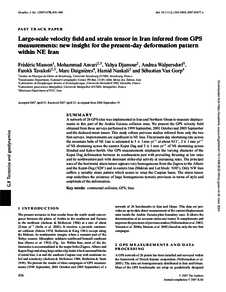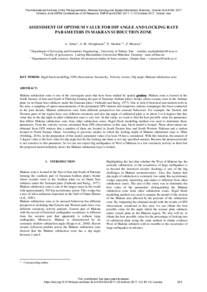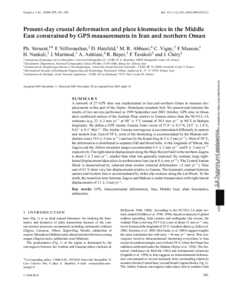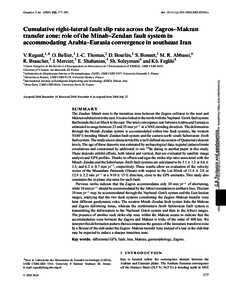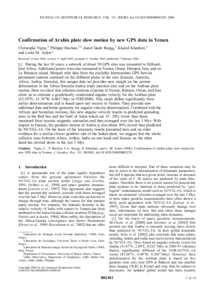Document
Large-scale velocity field and strain tensor in Iran inferred from GPS measurements : new insight for the present-day deformation pattern within NE Iran.
Identifier
DOI: 10.1111/j.1365-246X.2007.03477.x
Source
Geophysical Journal International. v. 170, 1, p. 436-440
Contributors
Anvari, Mohammad., Author
Djamour, Yahya., Author
Walpersdorf, Andrea., Author
Tavakoli, Farokh., Author
Daignieres, Marc., Author
Nankali, Hamid., Author
Van Gorp, Sebastien., Author
Country
United Kingdom.
City
London.
Publisher
The Authors.
Gregorian
2007-07-01
Language
English
English abstract
A network of 26 GPS sites was implemented in Iran and Northern Oman to measure displacements in this part of the Arabia-Eurasia collision zone. We present the GPS velocity field obtained from three surveys performed in 1999 September, 2001 October and 2005 September and the deduced strain tensor. This study refines previous studies inferred from only the two first surveys. Improvements are significant in NE Iran. The present-day shortening rate across the mountain belts of NE Iran is estimated to 5 ± 1 mm yr-1 at about N11°, 2 ± 1 mm yr-1 of NS shortening across the eastern Kopet Dag and 3 ± 1 mm yr-1 of NS shortening across Binalud and Kuh-e-Sorkh. Our GPS measurements emphasize the varying character of the Kopet Dag deformation between its southeastern part with prevailing thrusting at low rates and its northwestern part with dominant strike-slip activity at increasing rates. The principal axes of the horizontal strain tensor appears very homogeneous from the Zagros to the Alborz and the Kopet-Dag (N20°) and in eastern Iran (Makran and Lut block: N30°). Only NW Iran suffers a variable strain pattern which seems to wrap the Caspian basin. The strain tensor map underlines the existence of large homogeneous tectonic provinces in terms of style and amplitude of the deformation.
ISSN
0956-540X
Category
Journal articles

